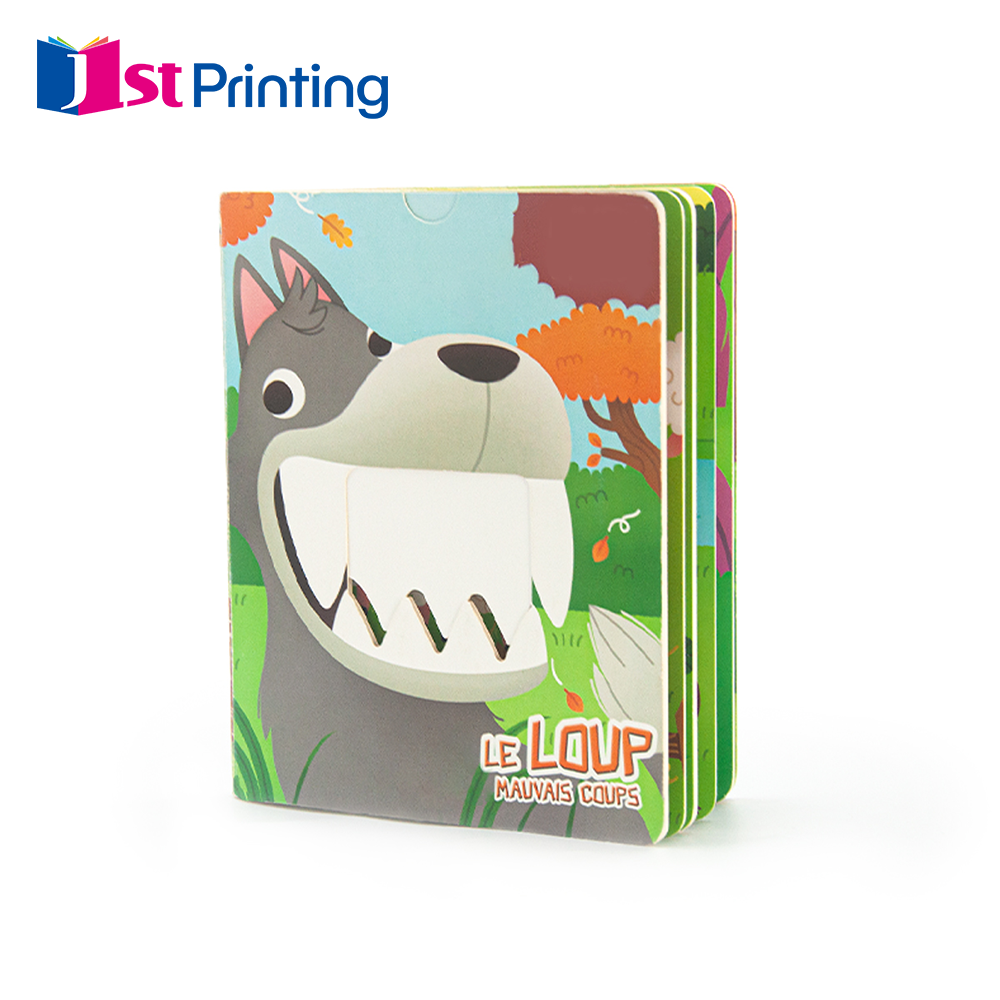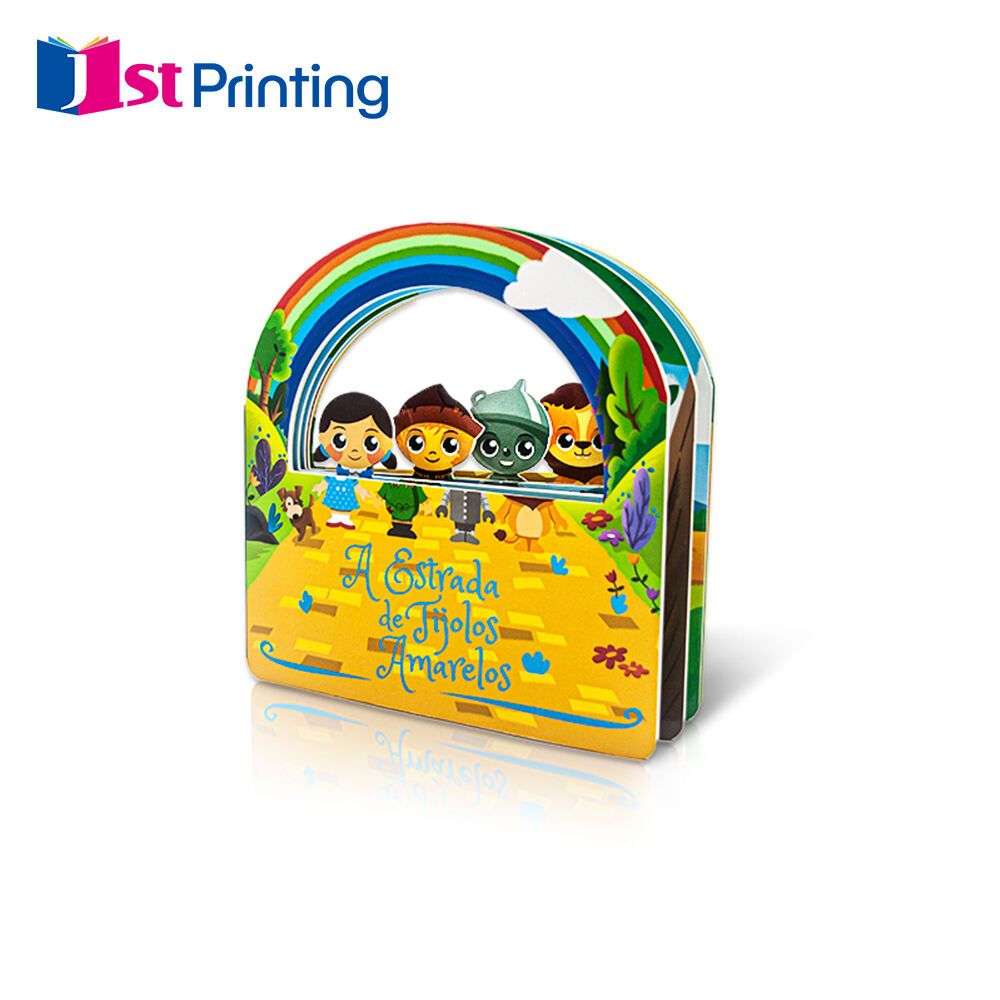Children's Books Printing: Safety and Fun Combined
Essential Safety Standards in Children's Book Printing
Non-Toxic Materials Certification Requirements
Non-toxic material certifications are critical in ensuring children's books are safe for young readers. One prominent certification is ASTM D4236, which ensures art supplies and materials are free from harmful substances. Using soy-based inks and recycled paper is also crucial in meeting these stringent safety standards. Manufacturers that adhere to these practices often highlight their compliance through such certifications, ensuring that parents and guardians can trust the materials used in books. Companies dedicated to children's book printing prioritize non-toxic certifications to align with safety regulations, thereby playing an important role in safeguarding young readers.
Durability Testing for Chew-Resistant Pages
Assessing the durability of printed books is essential, particularly for children's books, which often endure rough handling. The Taber Abrasion Test is a method used to ensure pages can withstand such wear and tear, including instances of children chewing on them. Studies indicate that a significant percentage of children's books fail without such testing, leading to a market demand for more robust pages. Innovations like laminated surfaces enhance this durability, offering chew-resistant pages that endure even the most enthusiastic of young readers. These developments are crucial in providing safe and long-lasting bilingual children's books.
Round Corner Cutting Techniques for Injury Prevention
Round corner cutting is a key technique employed in children's book manufacturing to prevent injuries. Sharp corners can pose a danger to children, prompting the industry to establish standards for corner radii in illustrated books. Adopting these injury-prevention measures helps publishers meet safety protocols. For instance, several well-known publishers routinely implement round corner cutting to enhance user safety. This technique not only reduces the risk of injury but also demonstrates the industry's commitment to producing safe paperback books. Implementing industry standards ensures children's interactions with these books are both safe and enjoyable.
Combining Fun and Safety Through Design
Interactive Elements That Meet Safety Guidelines
Children's books often incorporate interactive elements like flaps, textures, and movable parts to engage young readers. However, these features must adhere to stringent safety guidelines to ensure they do not pose any risk. For instance, books with mechanical parts should comply with safety certification requirements, like the ASTM F963 standard, which evaluates the potential hazards of toys and related products. Successful examples include books like "Pat the Bunny" and Eric Carle's "The Very Hungry Caterpillar," which incorporate interactive components without compromising safety. Publishers ensure these elements are securely attached and use non-toxic materials to meet safety standards.
Color Psychology for Engaging Yet Calming Palettes
The use of color in children's book design is critical, as it can significantly affect a child's emotional and cognitive responses. Bright and stimulating colors can energize and capture attention but may also lead to overstimulation if used excessively. In contrast, soothing hues like pastel blues and greens promote calmness and focus. Child psychologists emphasize the importance of balancing these colors, suggesting that a harmonious palette can enhance a child's reading experience and mood. For example, the gentle pastels in "Goodnight Moon" create a comforting and serene environment, while the vibrant colors in "Brown Bear, Brown Bear, What Do You See?" stimulate engagement and curiosity.
Age-Appropriate Content Structuring Strategies
Designing content that is suitable for specific age groups is vital for promoting comprehension and enjoyment in children's literature. Guidelines often suggest that content complexity should align with a child's cognitive and language development stages. Research indicates that age-appropriate content enhances learning and retention, as children better grasp themes and language at their developmental level. For instance, picture books for toddlers typically rhyme and repeat phrases, aiding memory and understanding, while books for older children introduce more complex plotlines and vocabulary. Successful examples include "Where the Wild Things Are" for younger audiences and "Harry Potter" series for more advanced readers, each tailored to engage their respective age groups effectively.
Material Selection for Child-Friendly Books
Food-Grade Inks vs Traditional Printing Inks
Choosing food-grade inks over traditional printing inks is crucial for enhancing the safety of children's books. Food-grade inks are formulated to be non-toxic and are often used for books aimed at younger children who may tend to put books in their mouths. These inks undergo stringent safety certifications to ensure they do not contain harmful chemicals like lead or heavy metals. In contrast, traditional inks might not meet these safety standards, posing potential health risks. Industry experts suggest incorporating food-grade inks in the production of books for kids to ensure compliance with international safety regulations and parental peace of mind.
BPA-Free Plastic vs Recycled Paper Considerations
The selection between BPA-free plastics and recycled paper is significant in producing safe and sustainable children's books. BPA, a chemical commonly found in plastics, is known to disrupt endocrine functions, making BPA-free materials a safer option for children's products. While plastic offers durability and waterproof qualities, recycled paper aligns more closely with environmental sustainability and often appeals to eco-conscious consumers. Shifts in consumer preferences increasingly favor materials that are both safe and eco-friendly, highlighting a growing trend toward using recycled paper in children's book production. Balancing safety and sustainability facilitates the creation of children's books that satisfy both safety guidelines and consumer expectations.
Fabric Choices for Washable Cloth Books
Fabric selection is critical in crafting washable cloth books that are both safe and durable for children. Materials such as cotton or polyester blends are favored because they are soft, robust, and machine-washable. Using non-toxic dyes is also crucial to ensure that the fabrics are safe for children. Experts recommend selecting colors that are not only vibrant to engage young readers but also maintain their brightness after repeated washes. Popular cloth books like "The Very Hungry Caterpillar" have successfully utilized high-quality, washable fabrics, emphasizing the necessity of choosing materials that combine safety with practicality in children's cloth books.
Custom Printing Solutions for Safe Storytelling
Children's Board Books Custom Size & Color Printing
Customizing children's board books in terms of size and color is essential for enhancing their visual appeal and uniqueness. The ability to select custom dimensions and a vibrant palette allows publishers to tailor books to specific audiences, making them stand out in a competitive market. This level of customization can be particularly beneficial for bilingual children's books and illustrated books, where visual attractiveness plays a crucial role. According to industry insights, successful projects often involve unique size options and rich color schemes that make books more engaging and interactive for children. Publishers have noted that incorporating these elements can significantly boost market success, as the personalized touch adds to the book's perceived value and desirability.
- Product Example: [Children's board books Custom size color baby picture reading learning hardcover book for kids custom printing service](https://www.1stprint.cn/childrens-board-books-custom-size-color-baby-picture-reading-learning-hardcover-book-for-kids-custom-printing-service)

Premium Hard Cover Board Book Production
The production of premium hard cover board books is pivotal for ensuring durability and child safety. Hard cover books offer greater protection against wear and tear, making them ideal for young readers who are often rough on their books. Moreover, using high-quality materials and processes in manufacturing these books enhances their sturdiness. This includes the selection of robust paper and non-toxic inks. The investment in premium production not only elevates the book's quality but also influences purchasing decisions positively, as consumers often associate higher quality with increased value and longevity. Thus, producing premium board books is a strategy that benefits both manufacturers in terms of sales and consumers in terms of product satisfaction.
- Product Example: [Custom Printing Service Custom Picture Color Size High Quality Hard Cover Children's Board Books](https://www.1stprint.cn/custom-printing-service-custom-picture-color-size-high-quality-hard-cover-childrens-board-books)

Spiral-Bound Activity Books with Safety-Edged Pages
Spiral-bound activity books offer considerable advantages in usability and safety, particularly for young children. Their design allows pages to lie flat, making it easier for children to engage with each page without struggle. Incorporating safety-edged pages is crucial, as it prevents injuries from sharp edges, providing peace of mind to parents. Manufacturers often opt for materials and design techniques focused on creating these safety features, ensuring the product is both safe and durable. Case studies in this sector demonstrate that safety-focused designs not only meet consumer expectations but also enhance the book's appeal, leading to increased satisfaction and potential market expansion for publishers.
- Product Example: [Custom Printed A4_A5 Mini Hardcover Journal Notebooks 120 Sheets Day Planner Fabric PVC Magnetic Spiral Binding Perfect Gift](https://www.1stprint.cn/custom-printed-a4_a5-mini-hardcover-journal-notebooks-120-sheets-day-planner-fabric-pvc-magnetic-spiral-binding-perfect-gift)

Innovative Printing Techniques for Educational Value
Bilingual Text Printing Best Practices
Incorporating bilingual text in children's books is crucial for cognitive development and literacy. Bilingual children's books can improve language skills, enhance cultural understanding, and foster better communication abilities. Best practices in layout and design involve carefully integrating text so that both languages are easily accessible to the reader, often through parallel columns or side-by-side pages. Successful examples, such as the "El buen dinosaurio/The Good Dinosaur," demonstrate how bilingual books can significantly impact literacy and cultural appreciation, as evidenced in case studies highlighting children's improved comprehension and interest in language.
Tactile Learning Elements in Illustrated Books
Tactile features in illustrated books significantly enhance reading engagement for young children. These features, such as textured surfaces, pop-ups, and interactive flaps, stimulate curiosity and help children connect with the story. Research supports the benefits of sensory experiences in learning, indicating that tactile elements can improve memory retention, comprehension, and emotional connection to content. The publishing industry is increasingly integrating tactile learning features into children's books, as seen in trends embracing technology to create interactive educational experiences.
Scented Ink Applications for Multi-Sensory Books
Scented inks can transform the reading experience, offering a unique multi-sensory engagement with books. Using scents can enhance storytelling by associating specific aromas with scenes or characters, deepening emotional and cognitive impact. Safety is paramount, so inks are carefully chosen to ensure non-toxicity for young readers. Notable examples of successful multi-sensory children's books, such as 'The Scratch-and-Sniff Guide to Wine' and children's editions like 'A Scent of Adventure', showcase how scents can effectively enhance the reading journey, bringing stories to life in unforgettable ways.
Quality Assurance in Children's Book Production
Choking Hazard Prevention Protocols
Ensuring children's safety in book production is crucial, particularly regarding choking hazards. Choking risks arise from small detachable parts often found in children's books, such as buttons in sound board books or interactive elements in die-cut designs. To mitigate these hazards, publishers must adhere to rigorous safety protocols. These protocols include utilizing advanced safety testing methods like tensile testing to measure breakaway force and small parts tests. According to the U.S. Consumer Product Safety Commission, there have been numerous recalls of children's products due to potential choking hazards, highlighting the importance of stringent safety protocols.
Lead Content Testing for International Standards
Compliance with international standards for lead content in children's products is non-negotiable to ensure the safety and well-being of young readers. Regulations like the CPSIA mandate stringent limits on lead content, necessitating thorough testing for any book materials susceptible to containing lead. Methods such as X-ray fluorescence (XRF) spectrometry are employed to detect lead presence and ensure adherence to these standards. Obtaining compliance certifications not only meets legal requirements but also bolsters a publisher's safety reputation. This adherence helps publishers maintain trust and credibility among parents and educators globally, further ensuring the success of children's books in international markets.
Colorfastness Testing for Frequent Handling
Colorfastness is a critical consideration in children's book production due to the frequent handling these books endure. Ensuring that the colors remain vibrant over time despite repeated usage is essential for both aesthetic and safety reasons. Various tests, such as crocking and washfastness tests, help ascertain that pigments are securely bound to the paper and will not easily rub off on children's hands. Poor colorfastness can lead to diminished visual appeal and may even result in safety issues if inks transfer onto skin. Thus, maintaining high standards of colorfastness is crucial for product usability and for safeguarding the publisher's reputation in delivering quality, durable books.















 ONLINE
ONLINE